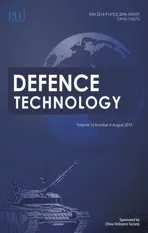A comparative study for the impact performance of shaped charge JET on UHPC targets
2019-10-31HaoWuFengHuQinFang
Hao Wu ,Feng Hu ,Qin Fang
a Research Institute of Structural Engineering and Disaster Reduction,College of Civil Engineering,Tongji University,Shanghai,200092,China
b Key Laboratory of Performance Evolution and Control for Engineering Structures of Ministry of Education,Tongji University,Shanghai,200092,China
c Research Institute for National Defense Engineering of Academy of Military Sciences PLA,Beijing,100091,China
d Amy Engineering University of PLA,Nanjing,210007,China
Keywords:Shaped charge jet Ultra-high performance concrete Penetration Perforation Numerical simulation
A B S T R A C T With the development of two-stage munitions(a precursor shaped charge(SC)and a following kinetic energy projectile)to attack the hard concrete targets,as well as the increasing applications of ultra-high performance concrete(UHPC)in both civil and military protective structures,a comparative study on the impact performance of SC formed jet on UHPC target is performed experimentally and numerically at present.Firstly,a series of jet penetration/perforation test on the UHPC,45#steel and UHPC/45#steel composite targets are conducted.By assessing the penetration depth and borehole(crater and tunnel)diameter,the influences of target material and configuration as well as the standoff distance of SC on the impact performance of jet are experimentally discussed.Then,by adopting the 2D multi-material Arbitrary Lagrange-Euler(ALE)algorithm,Fluid-Structure Interaction(FSI)method and erosion algorithm implemented in the finite element code LS-DYNA,the formation and impact performance of jet in the present test are well reproduced.Finally,based on the validated numerical algorithms,constitutive models and the corresponding parameters,the influences of target material(UHPC,NSC and 45#steel),standoff distance,target configuration(stacked and spaced)and weight efficiency on the impact performance of jet are further discussed.The derived conclusions could provide helpful references for evaluating the ballistic performance of jet and designing the protective structures.
1. Introduction
Shaped charge(SC)was initially equipped in the armor-piercing projectile to attack the metallic armor or ceramic/metal composite targets.In recent years,the two-stage munitions which consist of a precursor SC and a following kinetic energy projectile were developed to destroy the hard concrete protective structures,e.g.,airport runways,command bunkers and buried shelters.Therefore,it is necessary to study the impact performance of SC formed jet on the concrete targets.As shown in Fig.1(a),the typical SC consists of the cylindrical explosive with a lined cavity on one side and a booster on the opposite side.When the explosive is detonated,an approximate spherical detonation wave propagates outward.Simultaneously,the metallic liner material is deformed and accelerated normally under the high-detonation pressure,which forms a high-speed jet along the asymmetric axis of SC. Generally,depending on the geometry and angle of metallic liner,the SC formed jet can be roughly classified into jet(slim jet with obvious velocity gradient and high tip velocity),jetting projectile charge(JPC,rod-like jet with insignificant velocity gradient)and explosively formed projectile(EFP,projectile-like metal fragment with negligible velocity gradient and excellent stability)[1,2].Normally,the jet is formed by the conical metal liner with the angle roughly of 30°—70°,which possesses the prominent penetration performance.
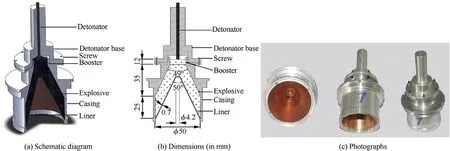
Fig.1.Dimensions and photographs of SC.
In the existing studies of the terminal ballistic performance of SC formed jet,Wang et al.[1,3]experimentally assessed the influences of liner material(steel,copper and aluminum)and cone angle(60°—140°) on the impact performance of jet on monolithic,stacked and spaced concrete target.It indicated that the SC with copper liner induces larger depth of penetration(DOP)but smaller borehole diameter than those with aluminum liner.Meanwhile,the spaced target could provide better protection efficiency than the stacked target against the impact of SC formed jet with copper liner and the liner angle less than 120°.Besides,by regression analysis of the test data,it was found that the DOP and borehole diameter increased and reduced quadratically with the jet impact velocity increasing,respectively.Murphy et al.[2,4,5]conducted a series of experiments and the corresponding numerical simulations of SC formed jet penetration into granite,normal strength concrete(NSC,48 MPa) and high strength concrete (HSC, 600 MPa) targets,respectively.The linear relationship between the jet kinetic energy and impact borehole volume of target was derived,and the penetration borehole diameter was confirmed linearly dependent on the concrete strength.Resnyansky et al.[6]performed the jet penetration test on NSC targets(40 MPa),in which the influences of conic liner angle(90°—110°),liner thickness(3 mm and 4 mm),SC height(0.47 and 0.61 times the charge diameter)and standoff distance of SC(1—2 times the charge diameter)were experimentally evaluated.It was concluded that,when the liner thickness was kept constant,the optimal liner angle and standoff distance of SC are 90°and 70—100 mm,respectively.Furthermore,Resnyansky and Weckert[7]experimentally derived that the ultra-high performance concrete(UHPC,200 MPa)exhibited nearly 22%higher jet impact resistance than NSC(40 MPa).By performing the shaped charge(conical and curvilinear copper liners)jet penetration test on high and ultra-high strength concrete targets(the compressive strength ranged from 101.57 MPa to 339.07 MPa),Zhu et al.[8]derived that the DOP decreases exponentially as the compressive strength of target increases at the beginning,and then the rate of the decreasing tendency slows down gradually and approximates the limit when the compressive strength approaches 200 MPa.However,Esteban et al.[9]experimentally found that UHPC didn't provide significant reduction in the total depth of penetration(DOP).Xiao et al.[10]experimentally and theoretically discussed the influence of the soil/concrete interface on the impact performance of a shaped charge penetrator during the penetration of a soil-concrete double-layered target.It was found that,the reflected and transmitted waves emerged at the soil/concrete interface can remarkably reduce the penetration velocity and further lead to the less penetration depth compared to the monolithic concrete target.
Besides,Fong et al.[11]used LS-DYNA3D hydrocode to numerically evaluate the impact resistance of concrete,masonry and reinforced concrete targets against EFP,respectively.Fu et al.[12]conducted the JPC penetration test on 45#steel targets,in which the large standoff distance of 20 times the charge diameter,and three liner configurations(spherical cone,truncated wide-angle and spherical segment)are considered.It was validated that the JPC formed by spherical segment liner has the most excellent penetration performance.Fu et al.[13]conducted the penetration test of eccentric hemisphere shaped charge formed JPC on reinforced concrete target,and examined the influence of linear material density on the penetration performance of JPC.It was derived that,compared to copper liner,the titanium alloy liner can increase the borehole diameter by about 20%under the condition of guaranteeing the penetration depth.Mayseless and Genussov [14]conducted several groups of jet penetration tests on various targets,i.e.,Rolled Homogeneous Armour(RHA),mild steel,aluminum,polyethylene and water,to assess the influence of target density on the jet impact performance.It indicated that,for the targets with identical weight and different densities,there exists an optimal target density for eroding the continuous jet.Yu et al.[15]experimentally examined the penetration performance of jet into rock target(59 MPa),and further evaluated the integrity of EFP after perforating the multilayered A3 steel plates.Gooch et al.[16]experimentally evaluated the influences of target density and hardness on the penetration performance of jet into two typical metallic targets(titanium alloy VT-6 and aluminum alloy V-95),respectively.It was found that when the impact velocity was increasing by more than 3 km·s-1,the strength of above two targets could be neglected.Jia et al.[17]studied the impact resistance of different types of woven fabric rubber(carbon,glass,Kevlar and poly)composite armors(WFRCAs)against the jet.By comparing the DOP,mass and space efficiency factors,the Kevlar WFRCA is validated superior to the others and the relative average reduced DOP is at least 63.5%.
As a relative new type of concrete material,UHPC possesses remarkable ductility,durability and strength properties,which has been becoming the most prospective construction materials for both civil and military protective structures against intensive impact and blast loadings,such as fortification,shelters,etc.Most of the existing studies on the impact performance of SC jet is focused on the metallic or ceramic targets.Besides,the existing works on the impact resistance of UHPC targets are mainly concentrated on the rigid[18,19]or small caliber bullets[20—22],the related investigations on the impact performance of SC jet impacting on UHPC targets are far from sufficient.
At present,the impact performance of jet on UHPC targets is mainly concerned.Firstly,by designing an SC with T2 copper liner,six shots of jet penetration tests on UHPC,45#steel and UHPC/45#steel composite targets are conducted,respectively.The influences of target material and configuration as well as standoff distance of SC on DOP and borehole diameter are experimentally assessed.Then,by adopting the Holmquist-Johnson-Cook(HJC)[23]and Johnson-Cook(JC)[24]models for concrete and steel targets,the corresponding FE model is established and the present test is numerically simulated by the hydrocode LS-DYNA[25].Finally,based on the validated numerical algorithms as well as the corresponding constitutive models and parameters,the influences of target material, standoff distance, target configuration and weight efficiency on the impact performance of jet are further discussed comprehensively.
2. SC jet impact test
2.1. SC
The SC with 50°conic liner is designed to study the impact performance of jet.The schematic diagram,dimensions and photographs of SC are shown in Fig.1,which is mainly composed of the detonator,detonator base,booster,explosive,casing and metal liner.The detonator base and casing are manufactured from 2A12 aluminum alloy,whilst the explosives filled into the casing and booster are both Comp B.As shown in Fig.1(c),T2 copper is adopted for the liner material,which has the high density(8.96 g·cm-3),low yield strength(90 MPa)and good elongation(45%—50%).
After the filled explosive is ignited by the detonator, the spherical detonation wave propagates outward from the ignition point.The detonation wave spreads at a detonation velocity of explosive(generally larger than 8 km·s-1)and a pressure about 30 GPa.After the detonation wave arrives at the liner,the copper liner is compressed,accelerated and converges along the centerline.Finally,partial liner material squirts out in the form of high speed jet.
2.2. Targets
At present,the UHPC,Chinese 45#steel and UHPC/45#steel composite targets are prepared to comparatively study the impact performance of jet.The basic mechanic properties of UHPC and 45#steel are introduced as follows.
2.2.1. UHPC
Table 1 lists the mix proportions of UHPC,in which the Chinese standard Graded 52.5 P.II type Portland cement is adopted.The admixture contains silica fume(2.1 g·cm-3and particle size of 0.10—0.20 μm),fly ash(2.7 g·cm-3)and slag(2.8 g·cm-3and particle size 3—6 μm).Besides,the quartz sand with size less than 600 μm,the Polycarboxylate type superplasticizer and the straight steel fiber(the equivalent diameter,length and tensile strength of0.15 mm,12 mm and 3000 MPa)are incorporated.The water-binder ratio and volumetric ratio of the mixed fiber are designed as 0.16%and 2%, respectively. The density of the UHPC is about 2480 kg·m-3.

Table 1 Compositions of UHPC kg⋅m-3.
Two cuboid UHPC targets with the dimension of 400 mm×400 mm×800 mm,and seven cylindrical UHPC targets with the dimension of φ120 mm×400 mm were casted,and cured atmospherically at ambient temperature and pressure.Meanwhile,the control specimens for uniaxial static compressive (prism,100 mm×100 mm×300 mm) and tensile tests (dog-bone,100 mm×100 mm×500 mm)were prepared.The axial compression,direct tensile and jet impact tests were all conducted at 49 days after the targets were prepared.Fig.2 illustrates the axial compression and direct tensile curves of UHPC specimens,in which the average compressive and tensile strengths of UHPC are 140 MPa and 7.7 MPa,respectively.
2.2.2. 45#steel
Four 45# steel cylinders with the dimension of φ120 mm×400 mm were machined, in which the density is 7.85 g·cm-3,and the corresponding chemical compositions are listed in Table 2.As shown in Fig.3,the standard tensile specimens of the 45#steel were manufactured simultaneously.By conducting the direct tensile test with the MTS 810 material testing machine at the strain rate of 2 mm·min-1,the true tensile stress-strain curves of three specimens are obtained and the average ultimate tensile strength is 626.6 MPa.
2.3. Setup
In the present test, two shots jet penetration test on the monolithic UHPC targets(Shots 1 and 2),one shot parallel penetration test on the monolithic 45#steel target(Shot 3),and three shots on the UHPC/45#steel composite targets(one layer,three layer stacked and spaced UHPC targets of Shots 4—6)are performed.Table 3 illustrates the detailed layouts of each shot,in which the SC is supported by the wooden frame with different standoff distances(SODs).The SODs are all 18 cm except for 23 cm in Shot 2,and the SC was placed perpendicularly to the target to guarantee the normal penetration into the target center.

Table 2 Chemical compositions of 45#steel%.
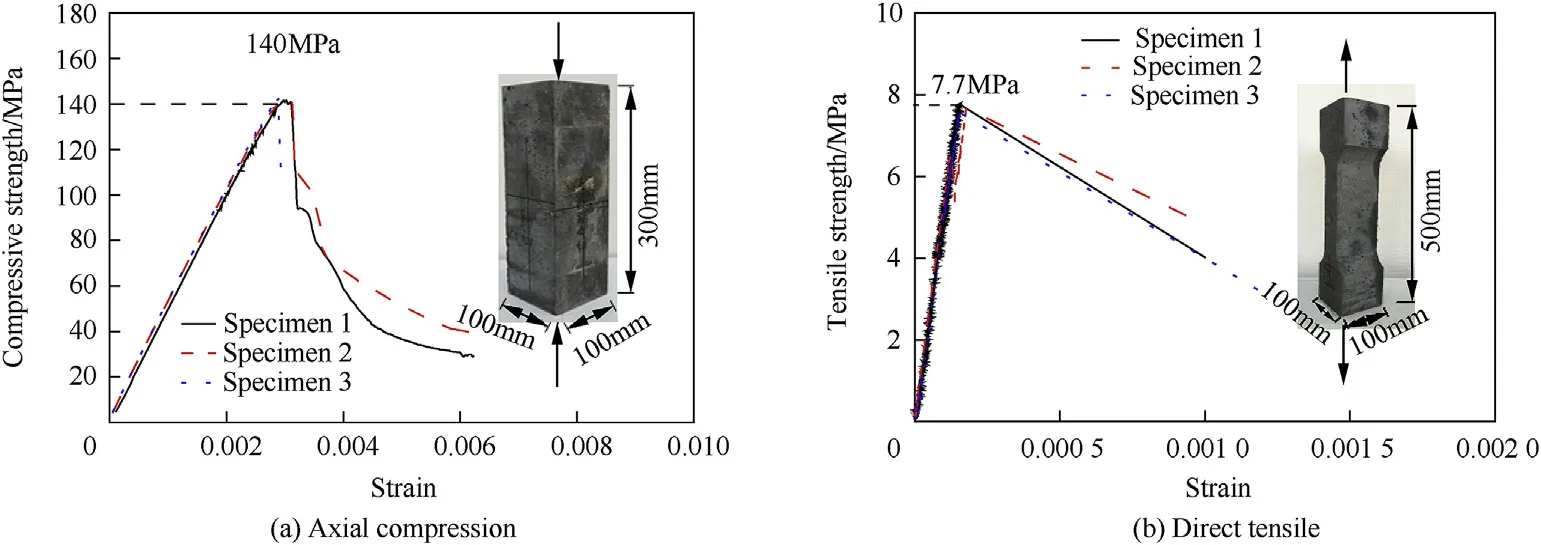
Fig.2.Stress-strain curve of UHPC.
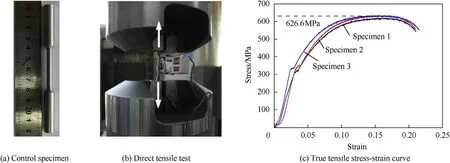
Fig.3.45#steel target.
3. Test results and discussions
3.1. Results
Under the jet impact,the penetration borehole including a frontal crater and a following tunnel was formed,and the corresponding dimensions are measured in detail.Fig.4 shows the photographs of the recovered targets and d1~d4are the dimensions of crater from four directions:horizontal,vertical,45°and 135°,as shown in Fig.4(a).Table 4 further gives the schematic diagram and dimensions of borehole profile of each damaged target,in which the value of crater diameter is the average of d1~d4.
3.2. Discussions
Based on the above test data,the influences of target material,target configuration and SOD on the impact performance of jet are discussed in this section.In the following bar charts,the value above the columns is the test data.
3.2.1. Target material
Since the 45#steel is provided with high strength,good plasticity and excellent cutting processing properties,it was widely used in the military field.UHPC possesses the outstanding impact resistance, fracture toughness and strength, which has been becoming the most promising cementitious material in protective structures.Based on the Shots 1 and 3(UHPC and 45#steel targets with the SOD of 18 cm),the influence of target materials on the jet impact performance can be evaluated.It can be seen from Fig.4 that the penetration borehole profile of UHPC consists of a crater and a succeeding cylindrical tunnel,while that of 45#steel is a smooth tunnel and becomes thinner gradually from top to bottom.The reason lies in that,the jet impact induces a tensile wave at the target surface,and the front crater is formed due to the less tensile strength of UHPC than the magnitude of tensile wave.Meanwhile,45#steel has a higher tensile strength and thus is expected to be less prone to spallation.From Table 4,under the identical SOD(18 cm),the typical borehole dimensions,i.e.,DOP and frontal crater diameter,of two typical targets are compared in Fig.5.It indicates that,(1)due to the high tensile strength of 45#steel target,the crater diameter of 45#steel target is just 22.4%of the UHPC target;(2)the density of 45#steel is 3.2 times that of UHPC,while the DOP of 45#steel target(33.6 cm)is only 17.2%less than that of UHPC target(40.6 cm).That is to say,in order to acquire the comparative impact resistance,the weight ratio of 45#steel to UHPC targets is (33.6×7830)/(40.6×2480)=2.6. Therefore,concerning the jet impact,45#steel can be substituted by UHPC when the total target weight is kept constant.
3.2.2. Target configuration
Fig.6 illustrates the DOPs of jet penetration into the targets with different configurations in which the SOD are all 18 cm.It indicates that,1)compared with the monolithic UHPC and 45#steel targets,the corresponding DOP reductions of composite targets are 27.1%—55.4%and 11.9%—46.1%,respectively.Thus the impact resistance of composite targets is more prominent than the monolithic UHPC and 45#steel targets against the jet impact.The main reasons lie in that,the concrete fragments generated with jet perforating the concrete layers will affect the continuity of jet,thus the penetrating capacity reduces.Besides,the stress wave generated by the impact will reflect at the interface of composite targets and interfere with the jet,thereby reducing the DOP;2)the total DOP in Shot 6 is 7.2%less than that of Shot 5,while the above reduction in the test[1]of NSC target reaches 17.9%.The reasons may lie in the following two aspects,firstly,for Shot 5,the residual concrete materials interfere with the jet,which greatly reduces its capacity to further penetrate the 45#steel target.For instance,two terminal trajectories of jet are formed in the rear 45#steel target shown in Fig.4(e).Secondly,for Shot 6,the effect of velocity gradient is not obvious for the present SOD of 18 cm.That is to say,the jet doesn't stretch and break evidently,thus the DOP is not reduced sharply.
3.2.3. SOD
As for the UHPC targets in Shots 1 and 2,the SODs are designed as 18 cm and 23 cm,respectively.Based on Table 4,Fig.7 illustrates the corresponding test data at the above two SODs.It indicates that,with the SOD increasing from 18 cm to 23 cm,the DOP increases by 10.8%and tunnel diameter decreases by 40%.The reason lies in that,due to the velocity gradient,the jet is stretched thinner with the SOD increasing.Meanwhile,the mass of jet converges more on the central axis,and thus more kinetic energy is consumed to increase the DOP,which is consistent with the conclusions drawn by Hu et al.[26].However,when the SOD is further increased to a certain distance,the jet will be unstable and break up into segments,thus the penetration performance will be reduced obviously.
4. Numerical simulations
In this section, by adopting the multi-material Arbitrary Lagrange-Euler(ALE)algorithm,Fluid-Structure Interaction(FSI)method and erosion algorithm implemented in the finite element code LS-DYNA, the present test and the existing test of jet impacting on plain NSC target conducted by Wang et al.[1]are both numerically simulated. The validated numerical algorithms,constitutive models and the corresponding parameters are further applied in the parametric analyses in Section 5.
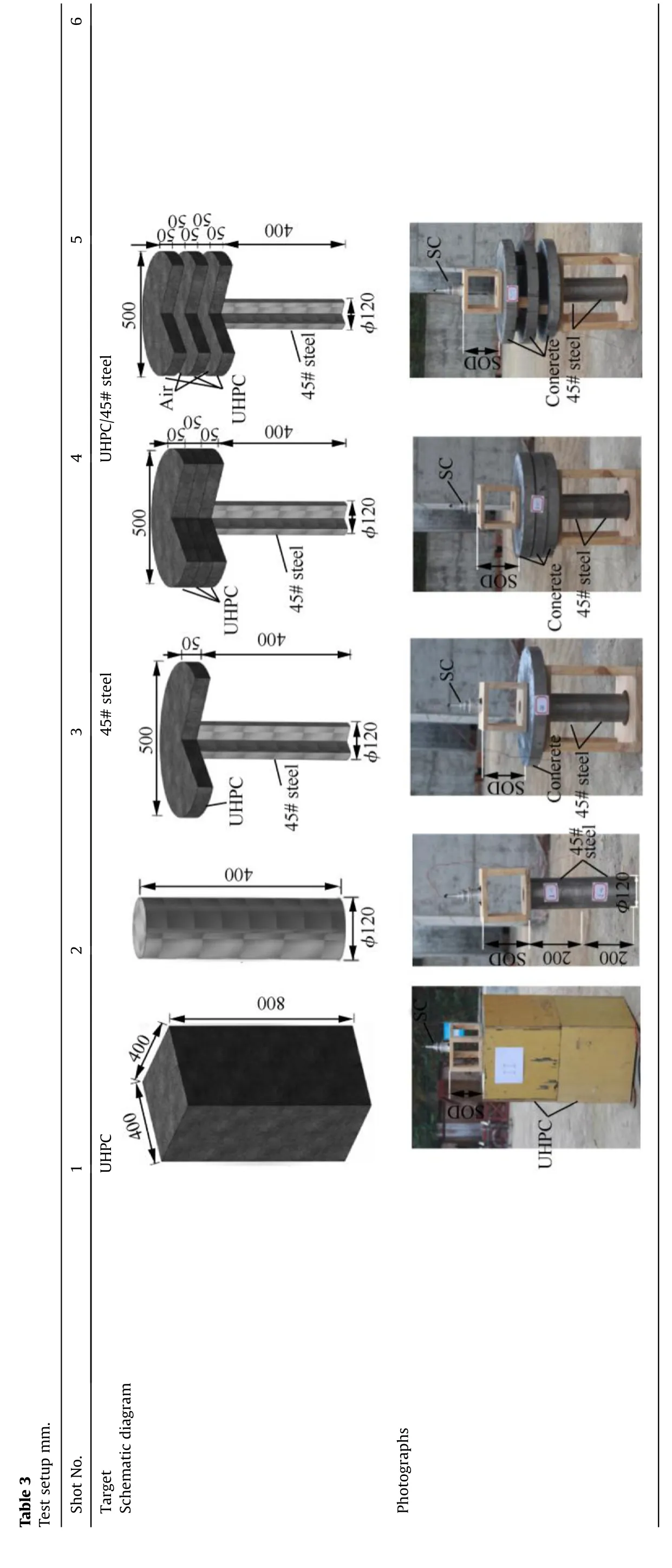
6 5 steel 4 UHPC/45#3 45#steel 2 1 UHPC Table 3 Test setup mm.Shot No.Target Schematic diagram Photographs

Fig.4.Target damage.

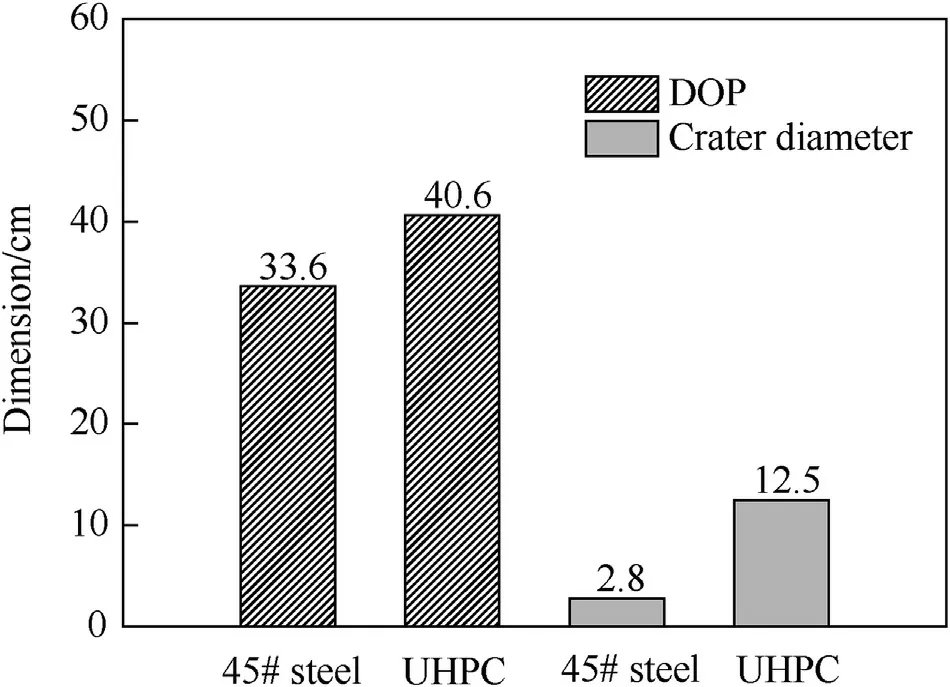
Fig.5.Penetration borehole dimensions of UHPC and 45#steel targets.
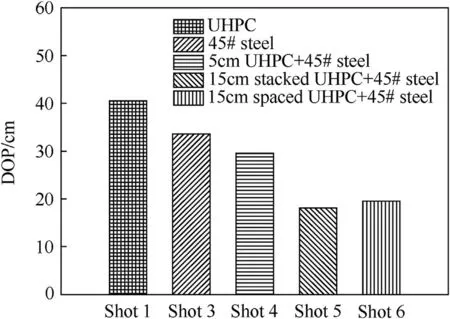
Fig.6.DOP of jet for different configurable targets.
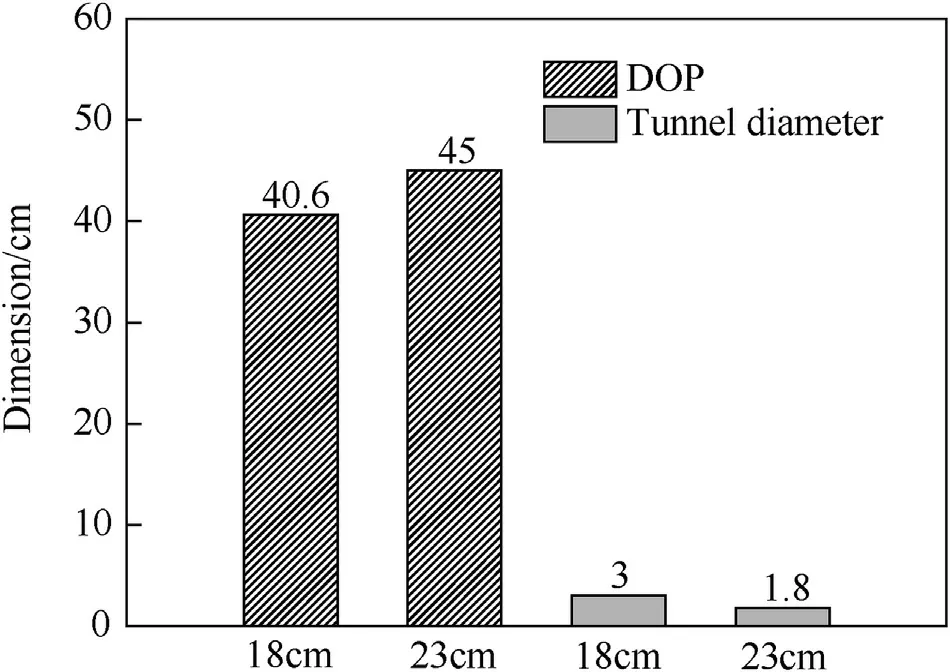
Fig.7.Penetration borehole of jet into UHPC with two SODs.
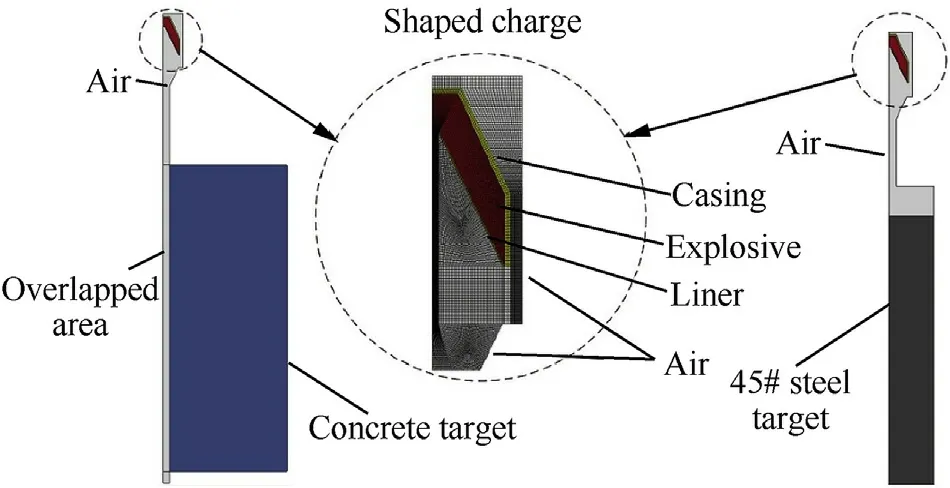
Fig.8.FE model and meshes.
4.1. Numerical algorithms
ALE algorithm can accurately simulate the high strain rate,high pressure and nonlinear deformation characteristics,and avoid the serious mesh distortions.The air,explosives,liners,casings and 45#steel target are computed by multi-material ALE algorithm,while the concrete targets is processed by Lagrange algorithm. The interaction between the jet and concrete targets is realized by the FSI method,which can efficiently solve the problems of interaction between the fluid and structures through coupling the compressible fluid to the stiff structures.The erosion algorithm is adopted to describe the physical fracture and failure process of the Lagrange concrete material.By using the keyword*MAT_ADD_EROSION,the elements will be deleted immediately when the material response reaches a prescribed value,e.g.,effective plastic strain,fracture strain or maximum principal strain,and the maximum principal strain criterion is adopted at present.
4.2. FE models and parameters
Considering that the calculation time of 2D model is almost one tenth of that for 3D model with the computer configuration of 32 GB RAM and eight Inter(R)Xeon(R)CPU E3-1231 v3,the 2D model is adopted at present to reduce the calculation time.As shown in Fig.4,there is no obvious cracks emerging at the edges of cuboid UHPC targets, thus the corresponding FE models are simplified to the axisymmetric models.For example,Fig.8 shows the FE models of UHPC and 45#steel targets,respectively.By performing the mesh convergence analysis,it is validated that the continuity of jet and the predicted borehole dimensions are nearly unchanged when the mesh size of ALE materials(e.g.,explosive,air,liner,casing and 45#steel)and target are smaller than 0.2 cm.Besides, considering the meshes match of ALE materials and Lagrange concrete target,the mesh sizes of which are adopted as 0.1 cm and 0.2 cm,respectively.The models are discretized with 4-node SHELL 162 element and the total numbers are approximately up to 160,000 and 90,000 for the models of concrete and 45#steel targets,respectively.The interaction between the jet and concrete target is implemented by coupling the ALE and Lagrange meshes,thus the partial meshes of air and concrete target are overlapped,as shown in Fig.8.
The high explosive burn material model(*MAT_HIGH_EXPLOSIVE_BURN(008#))and equation of state(EOS)of JWL are used to describe the explosive.The JC material model[24](*MAT_JOHNSON_COOK(015#))is adopted to describe the strength behavior of metallic liner and casing materials subjected to large strains,high temperatures and high strain-rates.The air is described with the NULL material model(*MAT_NULL(009#))and the linear polynomial EOS.HJC model(*MAT_JOHNSON_HOLMQUIST_CONCRETE(111#))[23]was verified having good accuracy to predict the projectile penetrations and it is adopted to describe the behavior of concrete target.The introduction of the above constitutive models can be referred from Refs.[23—26],in the present work,the corresponding model parameters adopted for Comp B explosive,metallic liner and casing,air,as well as the NSC and UHPC targets are listed in Table 5~Table 8,respectively.
4.3. Penetration process
In Fig.9,the typical formation and flight process of jet with the SOD of 18 cm is shown in sectional view.After the explosive is detonated,under the combined actions of detonation wave and gaseous product,the metallic liner is compressed,accelerated and converged to the axis of SC,forming the high-speed jet.It can be seen that,the jet elongates during flying due to high velocity gradient and the slug keeps almost unchanged,thus it is furtherverified that the present SC formed penetrator is jet indeed.

Table 5 Constitutive model parameters of Comp B explosive.

Table 6 Constitutive model parameters of T2 copper liners,2A12 aluminum casing and 45#steel targets.

Table 7 Constitutive model parameters of air[27].

Table 8 HJC constitutive model parameters of concrete targets.

Fig.9.Formation and flight of jet.
Fig.10 further illustrates the penetration process of jet into UHPC and 45#steel targets with the SOD of 18 cm,respectively.It should be pointed out that,the slugs don't reach the bottom of the borehole at 600 μs,considering that the DOP contributions provided by the slugs can be neglected for its low velocity and small mass,the DOP at the instant of 600 μs is regarded as the final depths at present.
4.4. Comparisons
In this section,the jet penetration test on stacked and spaced NSC targets conducted by Wang et al.[1]as well as the present test on UHPC and 45#steel targets are numerically simulated,respectively.By comparing the test data and simulation results,the adopted FE algorithm, constitutive models as well as the corresponding parameters are validated.
4.4.1. Wang et al.[1]Test
Wang et al.[1]experimentally studied the influences of liner material and cone angle on the penetration performance of SC formed jet into multilayered NSC concrete target,in which the liner materials were steel,copper and aluminum,and the cone angles varied within 60°—140°.In order to validate the parameters of NSC,the scenario of jet with 60°copper liner impact on the multilayered targets are selected and simulated at present.The parameters of explosive,liner,casing and NSC target are given in Table 5 ~Table 8.Fig.11 and Fig.12 illustrate the penetration process of jet into the stacked and spaced NSC targets,respectively.It can be seen that the jet with obvious velocity gradient is formed.Table 9 further gives the comparisons of test data and simulation results,and good agreements can be found.
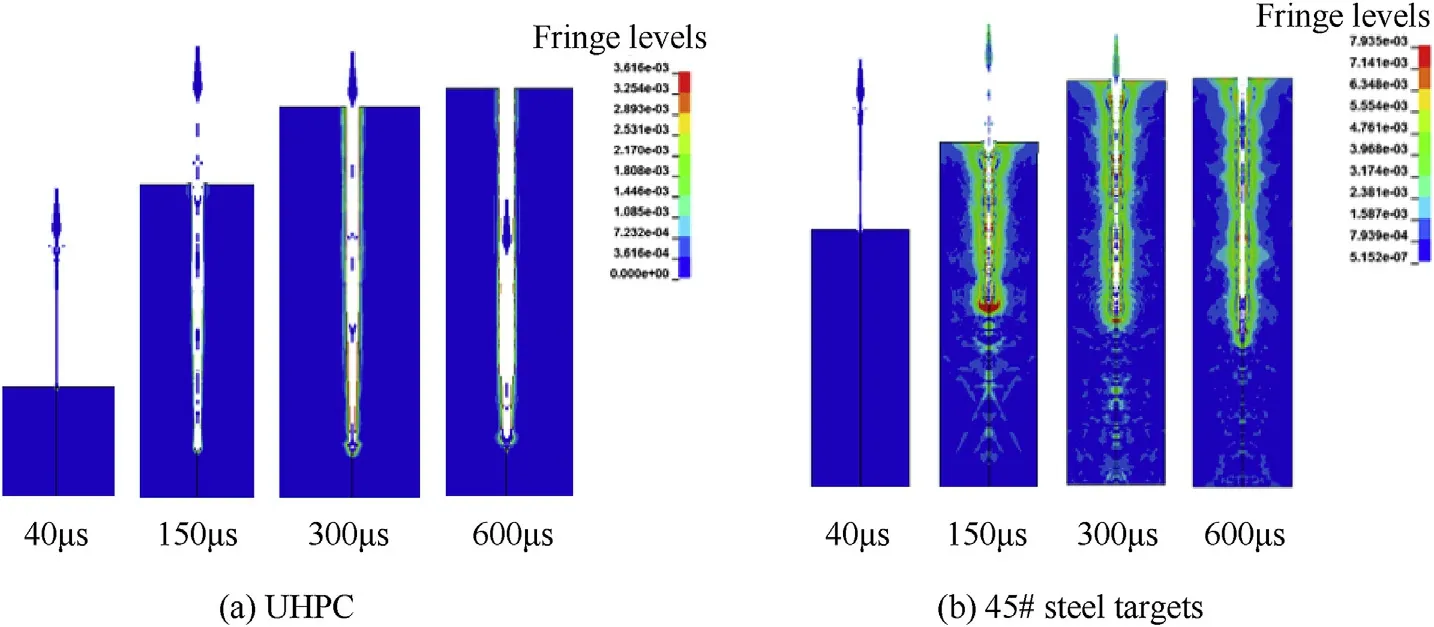
Fig.10.Penetration process of jet into UHPC and 45#steel targets.

Fig.11.Jet penetration into stacked NSC target termination.
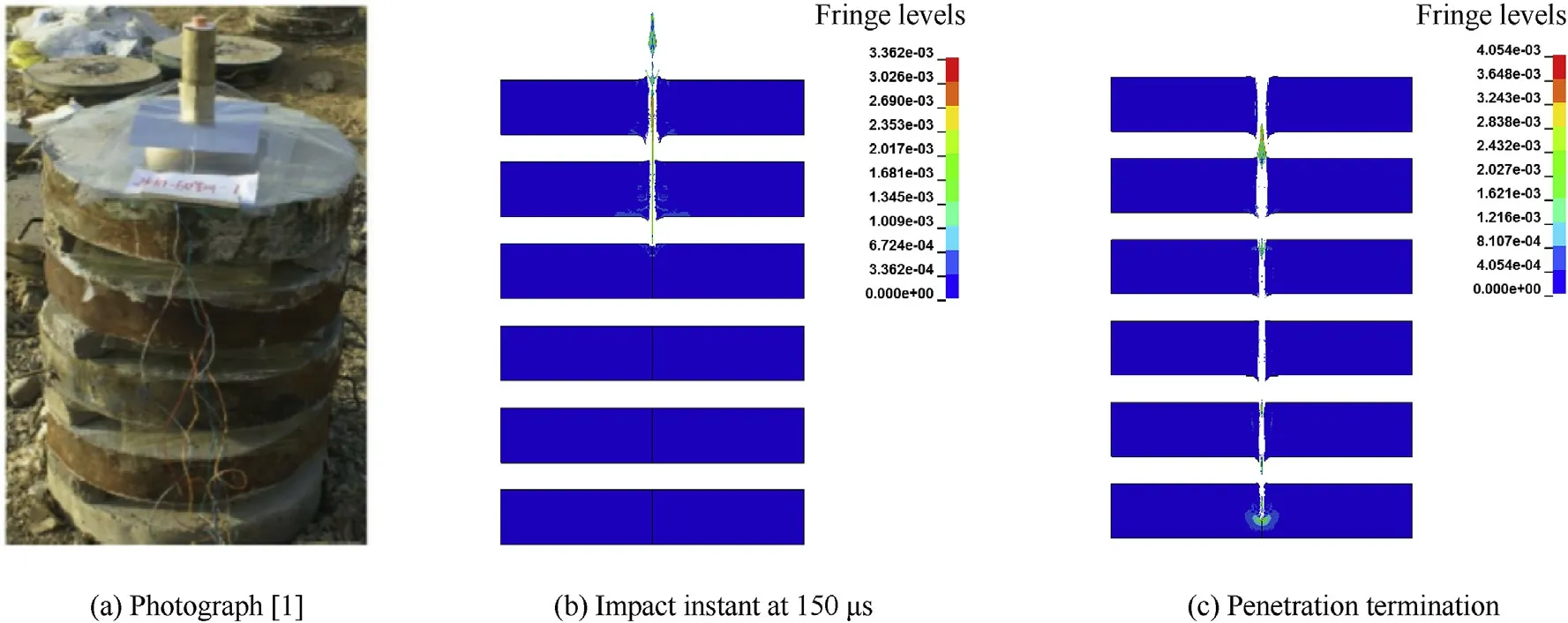
Fig.12.Jet penetration into spaced NSC target.

Table 9 Comparisons of test data and simulation results.
4.4.2. Present test
Fig.13 illustrates the simulated damaged targets subjected to jet in the present test,in which the corresponding materials parameters are listed in Table 5 ~Table 8.Table 10 lists the comparisons of test data and simulation results.It can be seen that the simulation results agree well with the test data,only the deviations of the Shots 4 and 5 are relatively larger.The reason lies in that,the actual residual concrete fragments generated with jet perforating the concrete layer will affect the continuity of jet.While for the simulation,the damaged concrete material is deleted by the erosion algorithm.The FEM-DEM(finite element method-discrete element method)may be a feasible approach,which will be attempted in the further study.
5. Parametric analyses
In this section,based on the above validated numerical algorithms,constitutive models and corresponding parameters,the influences of target material,SOD,target configuration(stacked and spaced)and weight efficiency on the impact performance of jet are comprehensively discussed numerically.In the following discussions,the jet is identical with the present test and the SOD is normalized to the charge diameter(d=5 cm).
5.1. Target material and SOD
The penetration of jet into UHPC with SOD of 18 cm(3.6d)and 23 cm(4.6d)are experimentally discussed in Section 3.At present,another three sets of jet penetrating into NSC,UHPC and 45#steel targets with the SOD increasing from 1d to 6d are further complemented.Fig.14 illustrates the DOP of different target materials versus the dimensionless SOD,and Fig.15 further shows jet profile at the impact instant with different SOD.It indicates that,1)with the SOD increasing from 1d to 6d,the DOP of UHPC is 15.3%—25.3%less than that of NSC and the DOP of 45#steel is 11.0%—24.7%less than that of the UHPC,thus the UHPC has superior and inferior impact resistance than NSC and#45 steel against jet,respectively;2)for the concrete targets,with the SOD rising from 1d to about 4.6d,the jet is stretched thinner due to the velocity gradient,and more kinetic energy is consumed to increase the depth,thus the corresponding DOP is increasing gradually.Then,the DOP decreases with the SOD further increases more than about 4.6d,the main reason lies in that the flight distance of jet is elongated with the SOD and DOP increasing,the breakage of the jet during penetrations becomes more obvious,which reduces the jet penetration efficiency;3)for the 45#steel target,the jet is not broken for the present SODs,thus the DOP increases continuously with the SOD rising.That is to say,for the jet impact with significant velocity gradient,the optimum SOD dependent on the target materials is existed.
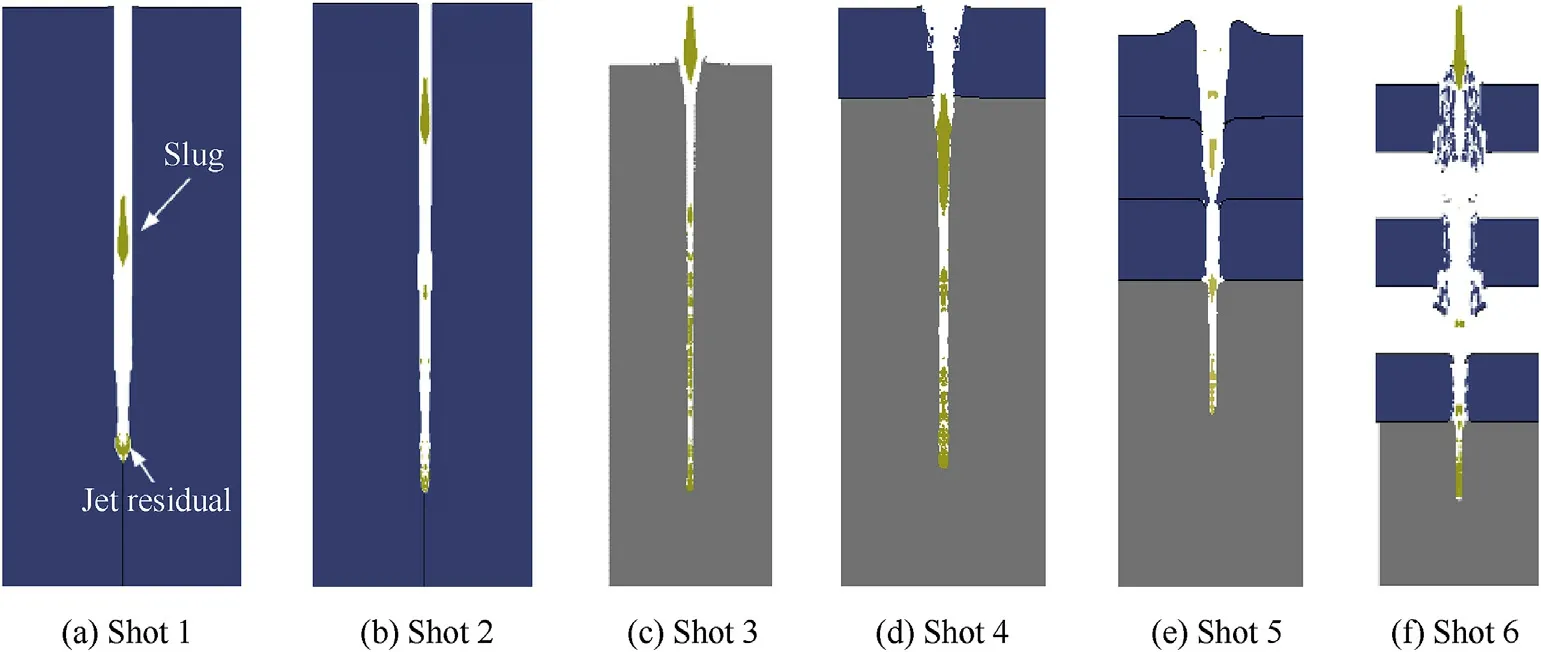
Fig.13.Damaged targets subjected to jet.

Table 10 Comparison of test data and simulation results.
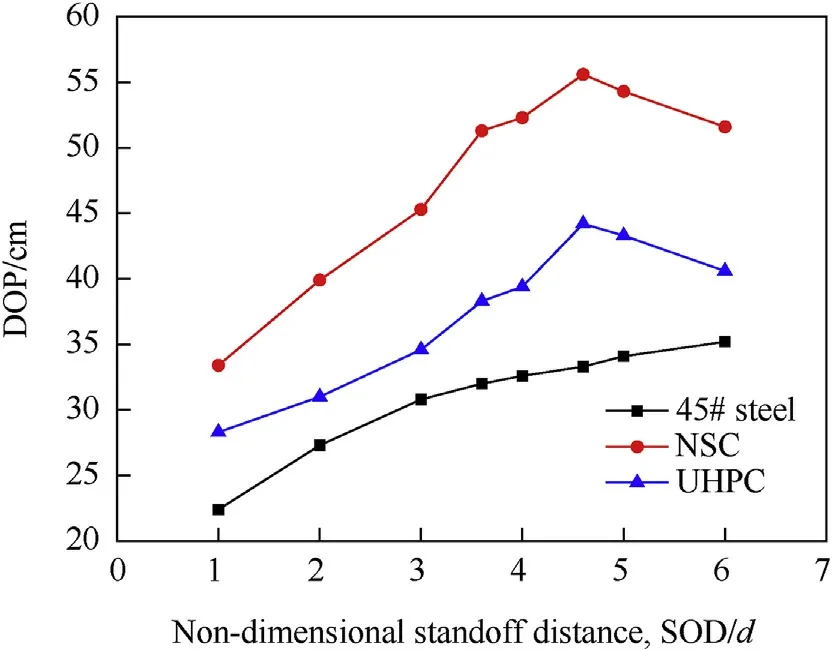
Fig.14.DOP of different target materials versus non-dimensional SOD.
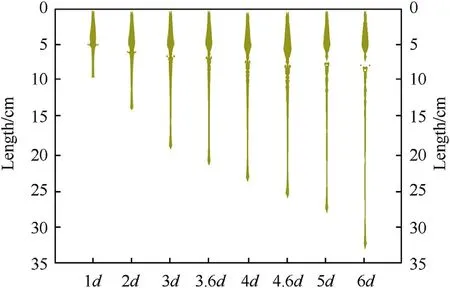
Fig.15.Jet profile at the impact instant on target with different SOD.
5.2. Stacked target
In this section,the impact resistance of stacked UHPC and NSC target against jet is compared by evaluating the residual jet tip velocities after perforating each layer of the targets.Taking the stacked target with six layers for example,in which each concrete slab has a thickness of 5 cm(1d)and the SOD is 10 cm(2d),Fig.16 shows the target damage and residual jet tip velocity after perforating the stacked UHPC and NSC targets,respectively.It can be seen that the differences in residual velocities between the jet perforating the first three layers of stacked UHPC and NSC targets are very small.The reason is that the jet tip velocity is so high that the influence of concrete strength is slight,e.g.,the tip velocities of jet after perforating three stacked layers are 4393 m·s-1and 4050 m·s-1for NSC and UHPC targets.With the penetration proceeding and the consumption of jet continuously,the influence of target strength is gradually dominated and the jet tip velocity decreases.Therefore,the residual jet velocity after perforating six stacked layers of UHPC target is significantly smaller(about 40%)than that of the NSC,e.g.,the corresponding tip velocities of jet are 2774 m·s-1and 1688 m·s-1for NSC and UHPC targets,respectively.
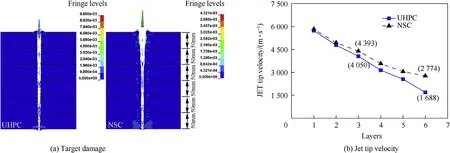
Fig.16.Jet perforating the stacked UHPC and NSC targets.
5.3. Spaced target
In this section,the impact resistance of the spaced UHPC and NSC targets against jet is compared by evaluating the residual jet tip velocities after perforating each layer of the targets.Taking the spaced target with six layers for example,the thicknesses of each concrete slab and the air interlayer are both 5 cm(1d),and the SOD is 10 cm(2d).Fig.17 shows the target damage and residual jet tip velocity after perforating the spaced UHPC and NSC targets,respectively.It indicates that,the jet perforates the six layers of spaced NSC target,while the sixth UHPC slab was not perforated.It can be also found that the difference in residual velocity between the jet perforating the first three layers of spaced UHPC and NSC target is very small.For the same reason,the tip velocity of the jet is so high that the influence of concrete strength is slight,e.g.,the tip velocities of jet after perforating three stacked layers are 4052 m·s-1and 3720 m·s-1for NSC and UHPC targets,respectively.With the penetration proceeding,the influence of target strength is gradually dominated and the jet tip velocity decreases.Comparing the Figs.16(b)and Fig.17(b),the corresponding residual jet tip velocities of the spaced targets are smaller than those of the stacked targets,respectively.Therefore,for the layered targets with the identical total thickness,the spaced target exhibits higher impact resistance than the stacked target against jet.
5.4. wt efficiency
In this section,the perforation resistance of three typical targets with the equal total weight but different thicknesses against jet is evaluated. The densities of UHPC, NSC and 45# steel are 2480 kg·m-3,2400 kg·m-3and 7830 kg·m-3,respectively.Fig.18 illustrates the material,thickness,damage and residual jet velocity of above three targets,the corresponding SOD and tip velocity of jet at the impact instant are 18 cm(3.6d)and 6795 m·s-1,respectively.It can be seen that,for the discussed scenario,1)the difference of the thickness between the UHPC and NSC is just 6 mm(3%),whilst the residual jet velocity after perforating the UHPC target is 11.2%smaller than that of NSC;2)the residual jet tip velocity after perforating 45#steel target is 36.6%and 21.3%higher than those of UHPC and NSC,respectively.That is to say,considering the weight efficiency of the target against jet,UHPC can provides higher perforation resistance than both NSC and 45#steel.Actually,the influence of target strength on the impact resistance can be neglected for such the ultra-high speed impact,in which the interaction between the jet and target can be characterized as a fluid-fluid interaction.The relative thicker target can help destroy the continuity of the jet and reduce the jet tip velocity,and the contribution of concrete strength on the perforation resistance becomes more predominant with the jet consuming continuously.
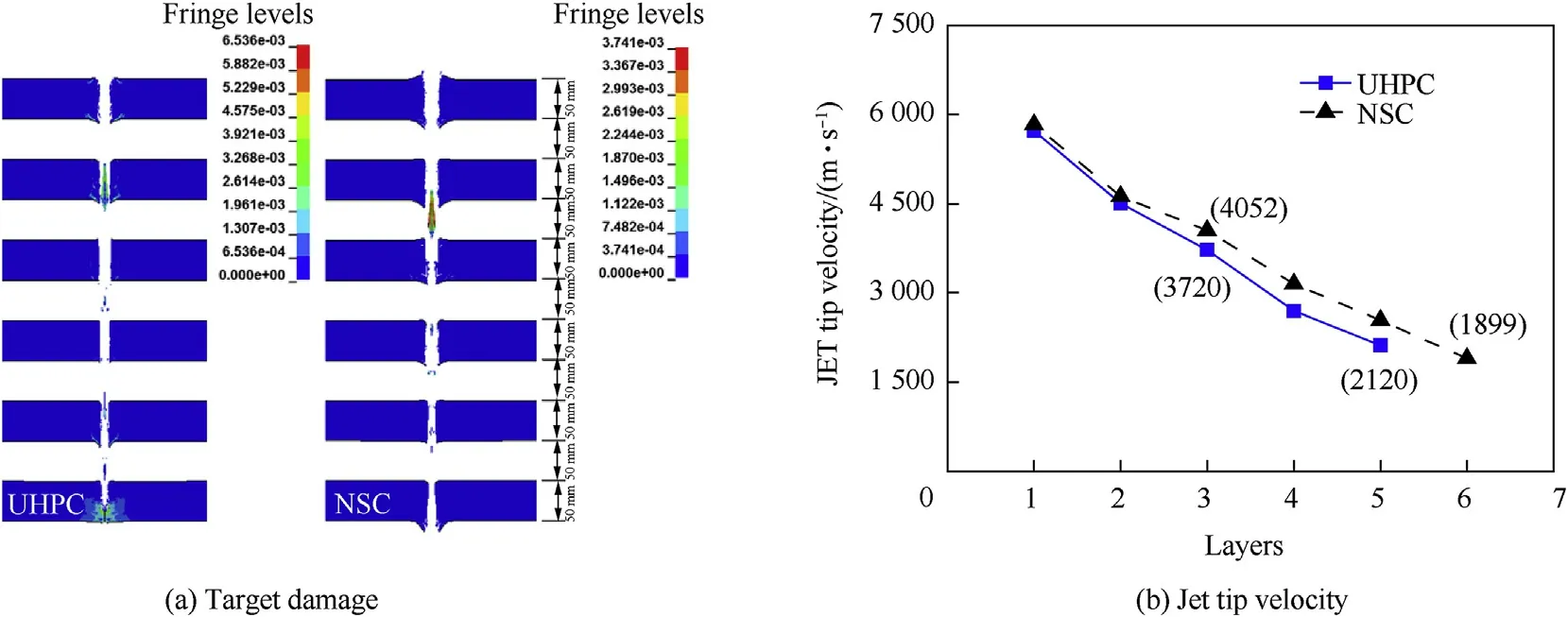
Fig.17.Jet perforating the spaced UHPC and NSC targets.

Fig.18.Damage of targets subjected to jet.
6. Conclusion
The impact performance of SC formed jet on UHPC target is comparatively studied by conducting the field test and numerical simulations of jet impacting on UHPC,45#steel and UHPC/45#steel composite targets,respectively.Furthermore,the influences of target material,standoff distance,target configuration and weight efficiency on the impact performance of jet are comprehensively discussed.In the discussed scenario,the main conclusions are:
For the jet penetrations,1)the impact resistance of UHPC against jet is superior to that of NSC for the 15.3%—25.3%reductions of DOPs,and the corresponding DOPs of 45#steel target are 11.0%—24.7%less than that of UHPC;2)the DOP of jet increases firstly and then descends with the SOD increasing,and the optimum SOD is dependent on the target materials;3)UHPC/45#steel composite targets are superior to the monolithic UHPC and 45#steel targets,the corresponding DOP reductions are varied within 27.1%—55.4%and 11.9%—46.1%,respectively.
For the jet perforations,1)with the equal total thickness,the spaced target provides better impact resistance against jet than the stacked target by evaluating the residual jet tip velocity;2)with the equal total weight,the residual jet tip velocity after perforating 45#steel target is 36.6%and 21.3%higher than those of UHPC and NSC,the residual jet tip velocity after perforating the UHPC target is 11.2%less than that of NSC,thus UHPC can provide higher perforation resistance against jet.
Acknowledgment
The project was supported by the National Natural Science Foundation of China(51438003,51878507).
杂志排行
Defence Technology的其它文章
- Modeling on the shock wave in spheres hypervelocity impact on flat plates
- Insensitive high explosives:IV.Nitroguanidine—Initiation&detonation
- Effect of energy content of the nitraminic plastic bonded explosives on their performance and sensitivity characteristics
- Effect of wave shaper on reactive materials jet formation and its penetration performance
- The role of crystal lattice free volume in nitramine detonation
- Optimizing the defensive characteristics of mild steel via the electrodeposition of Zn—Si3N4 reinforcing particles
